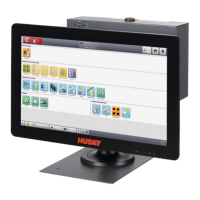User Guide v 1.0 — February 2020 Hot Runner Temperature Control
Types of Temperature Control 9
Chapter 2 Hot Runner Temperature Control
This guide is written to make sure that users get the maximum possible benefit from the use
of the Altanium Hot Runner Control Systems.
The Altanium controllers were designed as a processor's tool for hot runner molding. The
fundamental criteria necessary to operate a hot runner mold is to control the process
temperature so that it is as consistent and repeatable as possible with respect to the process
setpoint. The closer to the setpoint at which the process temperature is maintained, the
lower the setpoint temperature can be set. The results are less cooling time required (energy
in - energy out), and faster cycle times.
2.1 Types of Temperature Control
The Altanium controller uses two basic types of control:
• Open loop control with no thermocouple feedback.
• Closed loop control with thermocouple feedback. Closed loop can be sub-categorized
as follows:
- Internal Thermocouple - Located inside and as part of the heater assembly.
- External Thermocouple - Located close to, but not actually part of a single heater
assembly, and can also be allocated to a group of heaters to form a zone.
2.1.1 Open Loop Control
Without a thermocouple, it is not possible to control the temperature inside the mold, only
the amount of power supplied to the heater. The Altanium keeps an accurate power output
with a resolution of 0.1%. This method of control is called manual regulation.
Open loop control is usually associated with tip heaters, where the physical size of the tip
precludes the use of an internal thermocouple.
2.2 Configuring Zones
In an effort to match the energy input requirements of different types of loads, it is necessary
for the output power supplied to the heaters to be adjusted over a range of 0 to 100%. The
Altanium controller can be set to do this with the use of Zero Cross Control or Phase Angle
Control.

